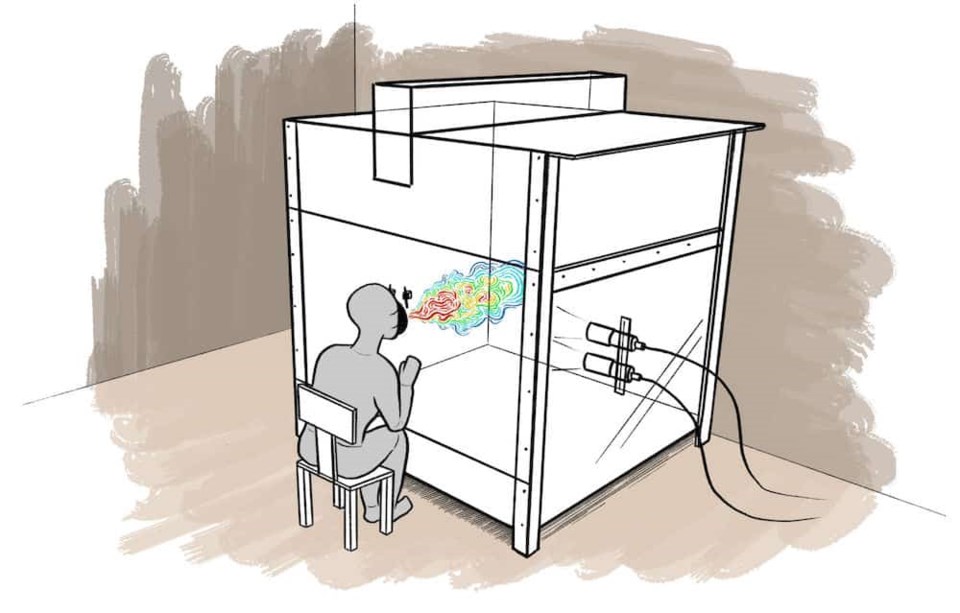While two metres has been the physical distancing standard for weeks in B.C., a new study finds that two metres may not provide enough distance to slow the spread of COVID-19.
Led by Western University, the study finds that two metres might not make much of a difference if someone coughs at you. Eric Savory, from the university’s manufactured a ‘cough chamber’ to analyze expulsive airflows (coughs) produced by human subjects, who were naturally infected with seasonal influenza.
According to a release, Savory and his collaborators found that if you are standing unobstructed six-feet away from someone who coughs,
the resulting droplets will reach you within three seconds and they will continue to projectile forward well beyond the recommended six feet.
“Even when you are 2.5 metres (eight feet) away, the airflow in the cough can still be moving at 200 millimetres a second,” explains Savory, who worked with virologists at Sunnybrook Hospital in Toronto for the final analysis.
“That means the very fine droplets are going to remain suspended for a long time, even after four seconds.”
According to the study, approximately 10 per cent of the cough droplets originally expelled are still in the air at a distance of six feet (1.8 metres).
"Western Engineering’s cough chamber is a two-metre enclosed cube with an opening and chin rest in the front, which is used as an access point for study participants to cough. Within the cube, a camera and a laser are used to determine the velocity of the expelled droplets from the cough," states the release.
The report authors note that physical testing was conducted up to and including the 2017-18 flu season, which is long before the global outbreak of COVID-19. However, the study provides still valuable data and analysis to government officials and healthcare workers around the world currently fighting the spread of the deadly disease.
Savory believes this study marks the furthest distance anyone has ever measured cough airflow. Right now, he is transitioning his findings specifically to the COVID-19 pandemic.
Collaborating with Eric Arts from Western’s Schulich School of Medicine & Dentistry and Franco Berruti from Western’s Department of Chemical and Biochemical Engineering, the interdisciplinary research team intend, "to examine the pathways of COVID-19 droplets through the air and analyze different material surfaces in order to verify its survivability under different temperature and humidity conditions."
This further investigation will be conducted in where Arts and his collaborators are actively developing an effective COVID-19 vaccine.
The findings of this study were recently accepted for publication in the journal .



